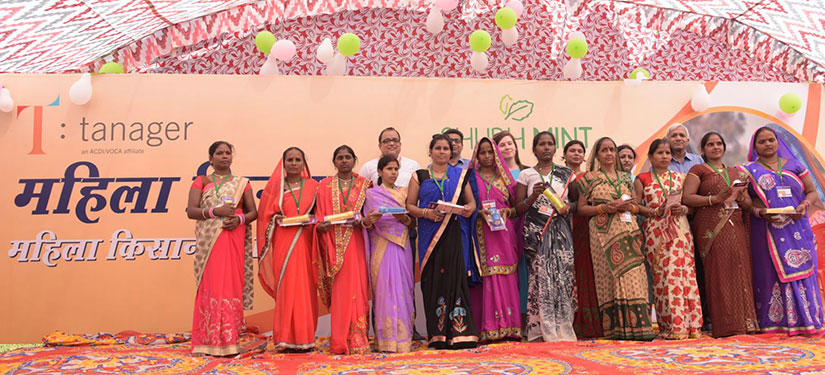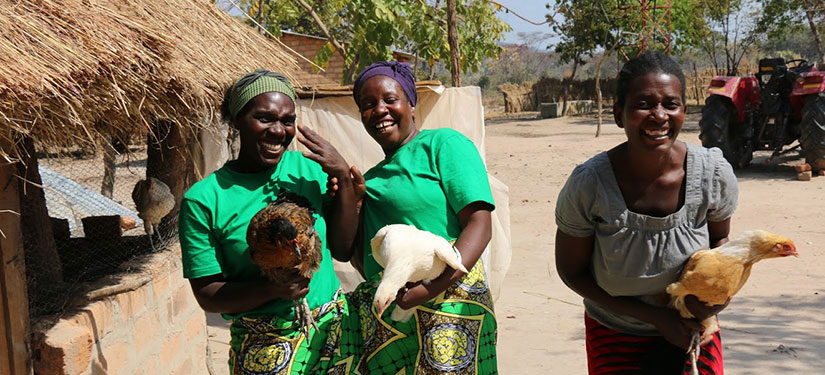
Celebrating International Day of Rural Women
By Mary Devlin
International Day of Rural Women was established by the United Nations in 2008 to recognize the contributions that rural women make to their households, communities, and the world (they make up a quarter of the population!). Many rural women work in agriculture—UN Women reports that “Agriculture remains the most important employment sector for women in developing countries, a sector that largely falls within the informal economy with little or no social protection and labor rights.”
At Tanager, we see agriculture and gender equality as inextricably linked. We engage women as key drivers of economic growth, knowing that their unique roles in agriculture, coupled with household and community responsibilities, often provide the basis for multiple gains. Below are examples of how we work to tap into the enormous economic potential of rural women.
Changing the Norms
Tanager’s work with the SELEVER project in Burkina Faso takes a market facilitation approach that integrates gender in improving smallholder poultry production. In partnership with local NGOs and key government agencies, we identify the levers that will stimulate the poultry value chain while also ensuring that these economic gains translate into increased gender equality in communities.
One SELEVER participant, Sarata Nabaloum, has seen a huge change in her household since she started participating in household poultry production. She says that before she received the training, she was a typical housewife who helped her husband take part in traditional poultry raising. However, after the training, she could convincingly communicate to her husband the opportunities that poultry production might make available. “After this,” she says, “my husband completely changed.”
Now, Sarata is responsible for all of the poultry raising at her household. She says her husband supports her in her activities, and now asks about her priorities when making household purchases.

Providing Market Linkages for Women
Engaging female producers in productive agricultural activities is key to achieving agricultural transformation. In Zambia, Tanager’s Women’s Improved Marketing and Asset Control (WIMAC) project empowered local women’s groups to pursue business opportunities and save for the future.
Working with the Matala Women Farmer’s Association and over 1,000 other farmer organizations to improve their organizational capacity, marketing acumen, and business practices, we trained more than 45,000 farmers, more than half of which were women. This training improved post-harvest handling practices and facilitated market linkages to increase access to buyers, suppliers, and service providers.
After the general business training, WIMAC and the Matala association focused on the production, storage, and processing of soya beans, a lucrative and highly nutritious crop. With their newly acquired knowledge, the association set to work maximizing the profits from their first soya crop. This successful harvest led to the start of a poultry production business, and the development of a special, highly-nutritious chicken feed. The association was then able to take their soya and poultry profits, along with membership fees and donations, and open a savings account with a local bank, paving the way for loan opportunities toward ensuring the success of future planting seasons.
Strength in Numbers/Groups
As part of our Shubh Mint activities in India, Tanager establishes self-help groups. These groups are designed to provide local support networks for women seeking greater financial access and government funding that would not otherwise be available to them as individuals through formal financial institutions.
In October, 2018, the Shubh Mint project hosted over 1,000 women self-help group members to celebrate International Day of Rural Women in Lucknow, India. I had the opportunity to meet one of the leaders of groups, who shared a bit about her experience. She said that at first, each member of her group contributed six rupees for savings. Over time, that amount increased to 10 rupees. The growth she saw helped her recognize the importance of saving as a group activity. “I am from a small village and this has made a difference,” she said. “If we all come together then it can make an even greater difference.”
As part of the festivities, a group of women presented skits for the audience. One of the skits depicted women participating in self-help groups. A woman was sitting in a chair and instructed another woman to pick her up by herself. Not surprisingly, she couldn’t lift the chair. But when she asked the other members to help her, they together were able to lift the woman in the chair off the ground.
For me, I can see that Tanager’s work with rural women is not unlike the group skit. It can be really hard for one person to bring about change alone. But when we all work together, we can lift women up so they can achieve their full potential.

